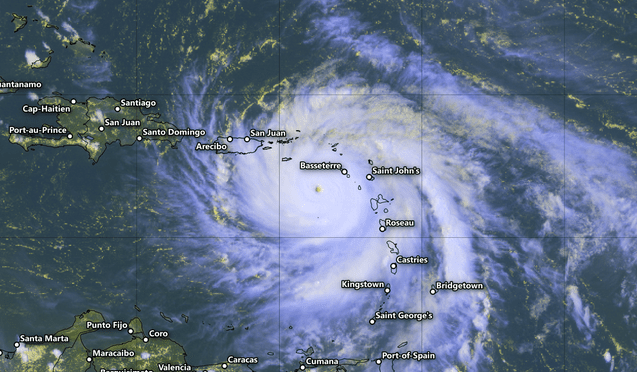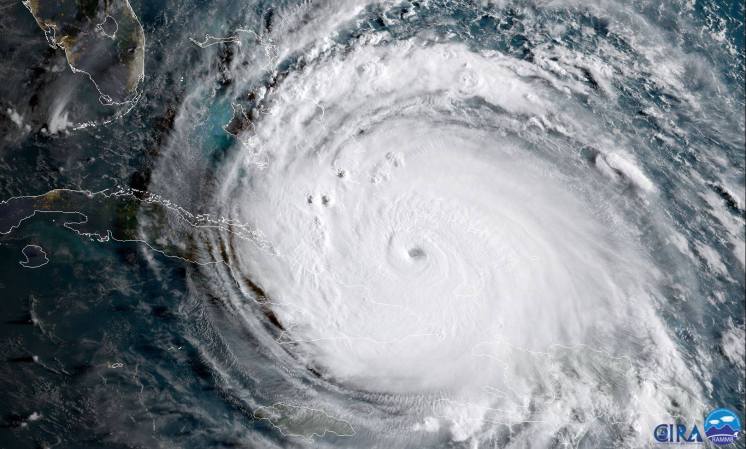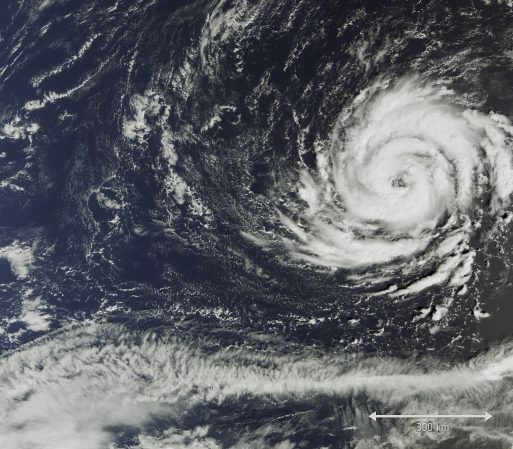

The following is an excerpt adapted from The Secret World of Weather: How to Read Signs in Every Cloud, Breeze, Hill, Street, Plant, Animal, and Dewdrop by Tristan Gooley.
Here’s an experiment I’d like you to try over the next day or two. Check out a weather forecast on the Internet. Zero in on anything it says about the wind. How strong is it, what direction is it coming from? Then step outside. I guarantee that the wind you feel will be totally different to the one that was forecast. But why?
The wind that is forecast belongs to a different weather world to the one we live in. The forecasted wind is there, but it’s blowing about one hundred feet above your head. The wind you actually feel is made up of a cast of different characters, breezes that are much richer and more colourful than anything that is bland enough to be true over a whole forecast region. Six new winds are born every time a breeze hits a building in the city.
In a walk of ten minutes, you should expect to meet ten different winds – and none of them will appear in a forecast. This diversity is true of every aspect of weather. There are hundreds of clues and signs that reveal this hidden world and they lie in clouds, plants, animals, streets, frost hollows, and sun pockets. They are there, waiting to be discovered, but you’ll miss them if you don’t know where to look. Because they are too local, too personal, to ever appear in regional reports.
Once you get to know what to look for, the signs take on a personality and every minute outdoors is like meeting old friends. Even the less friendly elements are worth getting to know. I’d like to introduce you to a couple of rain characters from The Secret World of Weather:
Rainbirds
When we walk through woods after rain there will always be secondary showers, as some of the rain that is being held in the canopy is shaken loose by the wind. We can hear the breeze responsible, as it shakes the tops of the trees. But there are other even gentler secondary showers that sound and feel different, and they encourage us to look up.
When the rain stops, the water on the upper branches accumulates in a precarious equilibrium. The leaves hold the perfect amount of water for that moment, some drops sitting on the leaf surfaces, others hanging from the tips. The water will sit there until it dries or is disturbed, and because the balance is finely tuned, it doesn’t take much of a disturbance to shake it free.
I first started to notice the showers caused by birds taking off when I paired the loud flapping of wood pigeons with the fat dollops of rain that fell onto my head. But since I spotted the racket and rainfall of these rambunctious birds, I have learned to sense the odd lighter shower that is too local, too narrow, too delicate for a breeze. Looking up, I have seen woodpeckers, corvids, and even small songbirds landing or taking off.

Shapes, Patterns and Time
Look at the tips of the broad leaves on the trees you pass. Did you know that the more pointed the leaf tips are, the rainier an area is? Leaves with distinct points have evolved to channel off the rainwater more efficiently via a central rib that leads to this point. Tropical rainforests are packed with pointy leaves.
[Related: Make your own weather station with recycled materials.]
Rain stipples the softest ground, leaving familiar pockmarks in mud, sand, silt, or snow. They tell us about the character of the rain: hard or soft, short or long. The bigger the gaps, the shorter the rain. In soft mud or sand, try to notice the difference between regular, lighter prints of rain and the deeper, less regular marks of secondary showers. These imperfect, cruder raindrop prints show us where a breeze or bird has shaken down the heavy drops. An hour ago, a crow took off from a branch fifty feet above our path, yet that story, written in rain, is still fresh by our feet.
Ragged Bottoms
Is it going to rain? What a popular question. The key to longer-term forecasts lies in the earlier chapters about clouds and fronts, but we will often find ourselves looking at an individual cloud and wondering if it’s about to soak us.
Rain rarely falls from small cumulus clouds, and if they’re wider than they are tall, it’s very unlikely indeed. But we can be a bit more forensic about this by studying the bottom of the clouds. As we have seen, the bottom of all clouds marks the height at which the temperature is cool enough to condense the water vapor in the atmosphere, the dew point. Since this level tends to be consistent, it leads to flat-bottomed clouds. It follows that a cloud with a ragged bottom is trying to tell us something.
We’re all used to the idea that clouds give us rain. It is less well known that rain creates clouds. When rain falls, it cools the air just below the cloud. This leads to more condensation and creates jagged areas of new cloud just below the main cloud, which gives the base a ruffled, rough appearance. Hence, smooth bases on cumulus clouds mean no rain falling, and ragged bottoms indicate rain falling. These craggy, uneven fragments of cloud are known in formal circles as “pannus” and are described as “accessory clouds.” They are rain’s footprints and can be seen under all clouds that rain falls from.
However somber a cloud appears, if it has a neat horizontal base and good visibility below, it is unlikely to rain on you.
Rain Ghosts
From time to time you may see what look like thin streaks falling from the base of clouds: virga. This is rain that evaporates before it reaches the ground—rain we can sometimes see but never feel. Virga consists of droplets or ice crystals that are just large enough to fall but not substantial enough to make the journey through the drier air below to the ground. If there is a strong wind at cloud level, the streaks can be seen falling behind the cloud as they drop into the slower wind below them. Although most common in hot, arid regions, virga can be seen trailing from the base of clouds anywhere.
Virga is an in-between sign: Conditions are nearly right for rain, but there isn’t enough water in the air yet. Like so many weather signs, virga is most useful in noticing a trend. Virga after heavy rain is common and is part of an improving situation; after clear skies, it means rain is not far off.
[Related: Six clouds you can use to predict the weather.]
The way the rain trails behind the parent cloud reminds me of cartoon ghosts that float above the ground, trailing their lower bodies behind them. This, combined with the way virga clouds are both raining and not raining, has led me to think of them as rain ghosts.
Excerpted from The Secret World of Weather by Tristan Gooley © 2021. Reprinted by permission of the publisher, The Experiment, LLC. Available everywhere books are sold. All other rights reserved.















